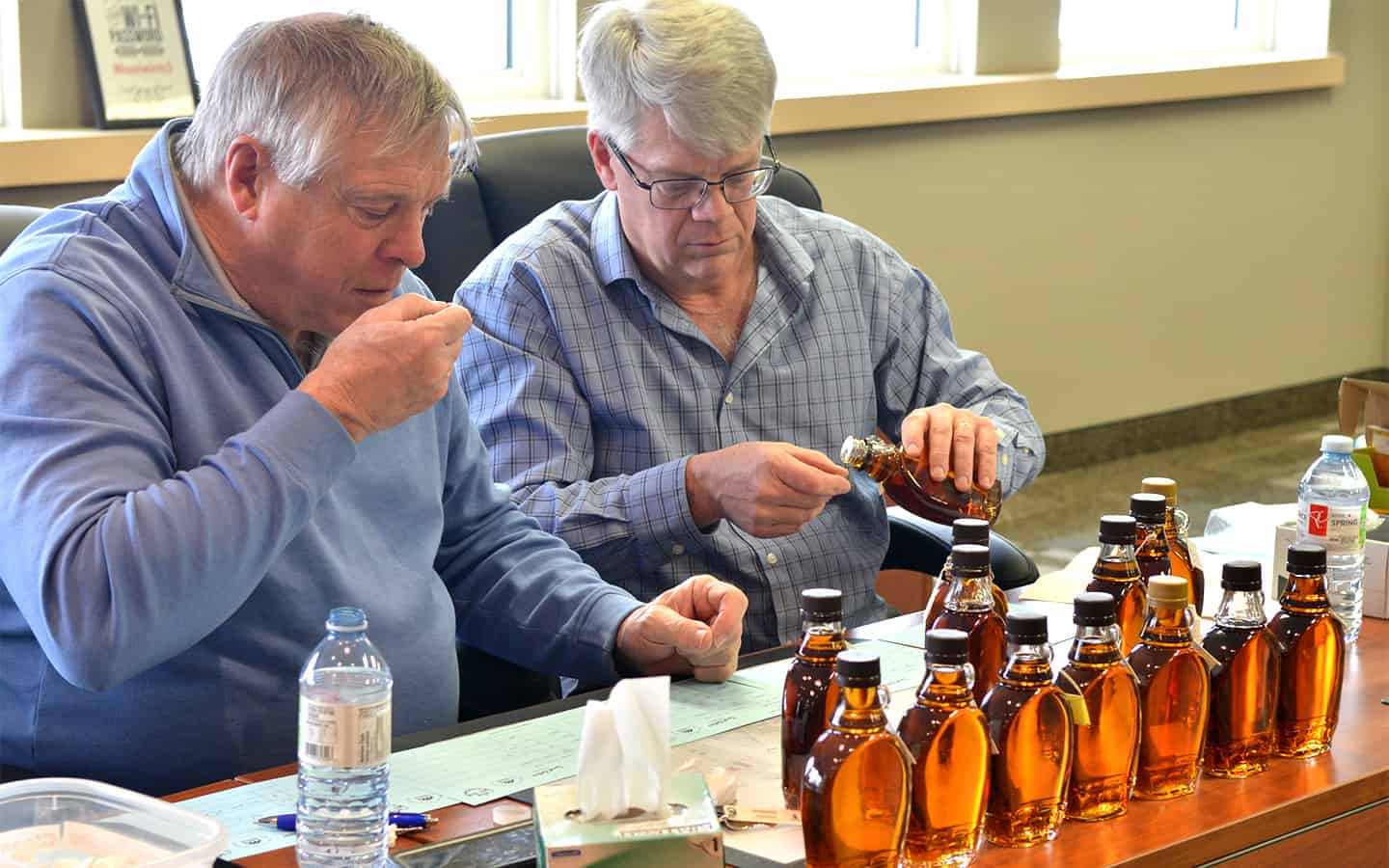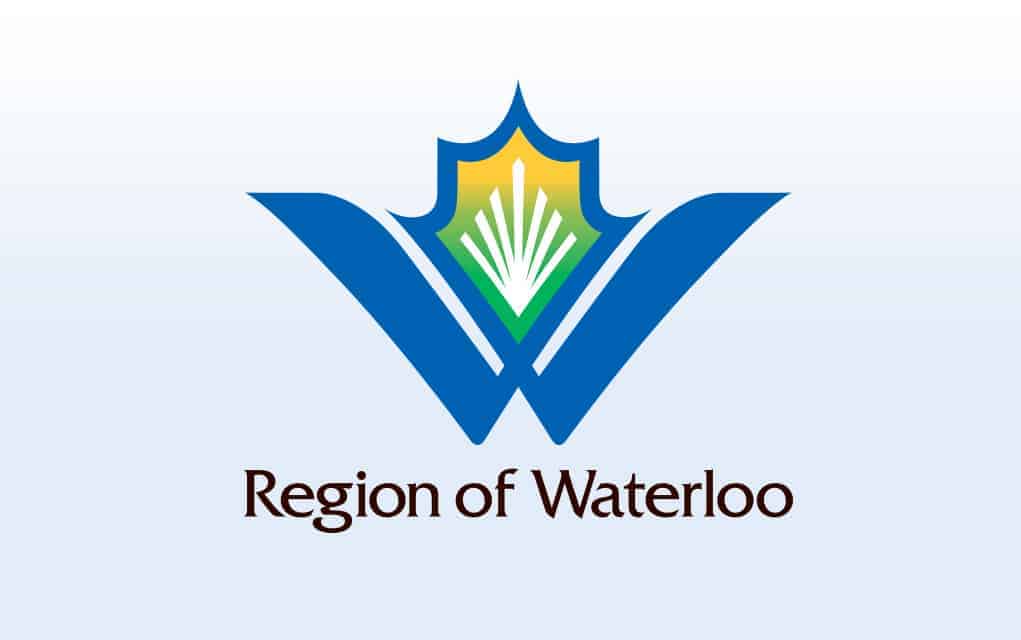And the winner is … well, that’s still a secret.
The winning entrant vying for the “producer of the year” title from the Elmira Maple Syrup Festival was chosen February 13, but just who supplied it won’t be announced until the ceremonial first tap on February 28.
A pair of judges sampled the maple syrup submitted by seven hopefuls during a session last Thursday at the Woolwich Township administration building in Elmira. Brian Bainborough, president of the Ontario Maple Syrup Producer’s Association, and Todd Leuty, a maple syrup expert with the Ontario Ministry of Agriculture, Food and Rural Affairs, were the arbiters.
Of the seven submissions, one was disqualified because the sugar content exceeded 69 per cent – in order to qualify, the product must be at least 66 per cent, but no more than 68.9 per cent.
Beyond 69 per cent, there’s a risk the product will crystallize, Leuty explained.
The disqualified entry remained part of the judging, including the taste test, in order to provide the producer with additional feedback.
“They’re all good. There’s none of these you couldn’t use,” said Bainborough after sampling the seven syrups. “There wouldn’t be one here that I’d be ashamed to serve to my friends and family.”
Along with the measurement of sugar content, carried out with a piece of scientific equipment, each of the syrups was judged for colour, visible imperfections and taste.
In this case, each entry had an amber colour – the classification is one of golden (light), amber, dark and very dark.
Golden is the toughest to produce, while dark syrups are the easiest, said Bainborough, who’s not only a judge and educator, but has a 4,000-tap operation on Manitoulin Island.
The colour depends not only on production methods, but the time of year and the type of season.
The flavour and colour of maple syrup vary throughout the season due to the various changes that its composition undergoes. At the beginning of the season, maple sap has a high content of sucrose, whereas at the end of the season, its fructose and glucose content increases.
Sucrose, fructose and glucose are all sugars, but each has its own distinct sweetening strength. Glucose and fructose have a sweeter flavour than sucrose. As such, maple sap collected at the onset of the season will produce syrup that is not as sweet as that from the close of the season, Leuty explained.
As with all sugars, the contents of various natural components found over maple sap (amino acids, minerals) vary with time. These changes in the make-up of maple sap are responsible for the differences in colour and flavour of maple syrup, and occur at different times during the season.
While the likes of colour, crystallization and sugar content can be measured objectively, the tasting portion is by definition subjective, said Leuty.
Both judges noted that training and experience help them detect subtle nuances in the flavour and texture. With the calibre of the entrants in last week’s tasting, it’s often small differences that end up tipping the scale.
That was borne out by the informal tasting afterwards that saw some members of the Elmira Maple Syrup Festival committee sample the wares. Volunteers Annie Crump and Quentin Mayer, for instance, both declared all of the submissions to be tasty without distinction.
“It’s tough,” said Bainborough of learning to differentiate. “You get some really good syrups – the differences are very slight now.”
The EMSF committee member responsible for the producer of the year contest, Greg Bedard, was the sole person to know who entered and who won, though he said he’d be making the winner aware to ensure they’d make it out to the tapping event February 28.
The winning entrant will be the exclusive supplier for the pancake breakfast at the festival, providing up to 600 litres of their syrup.









